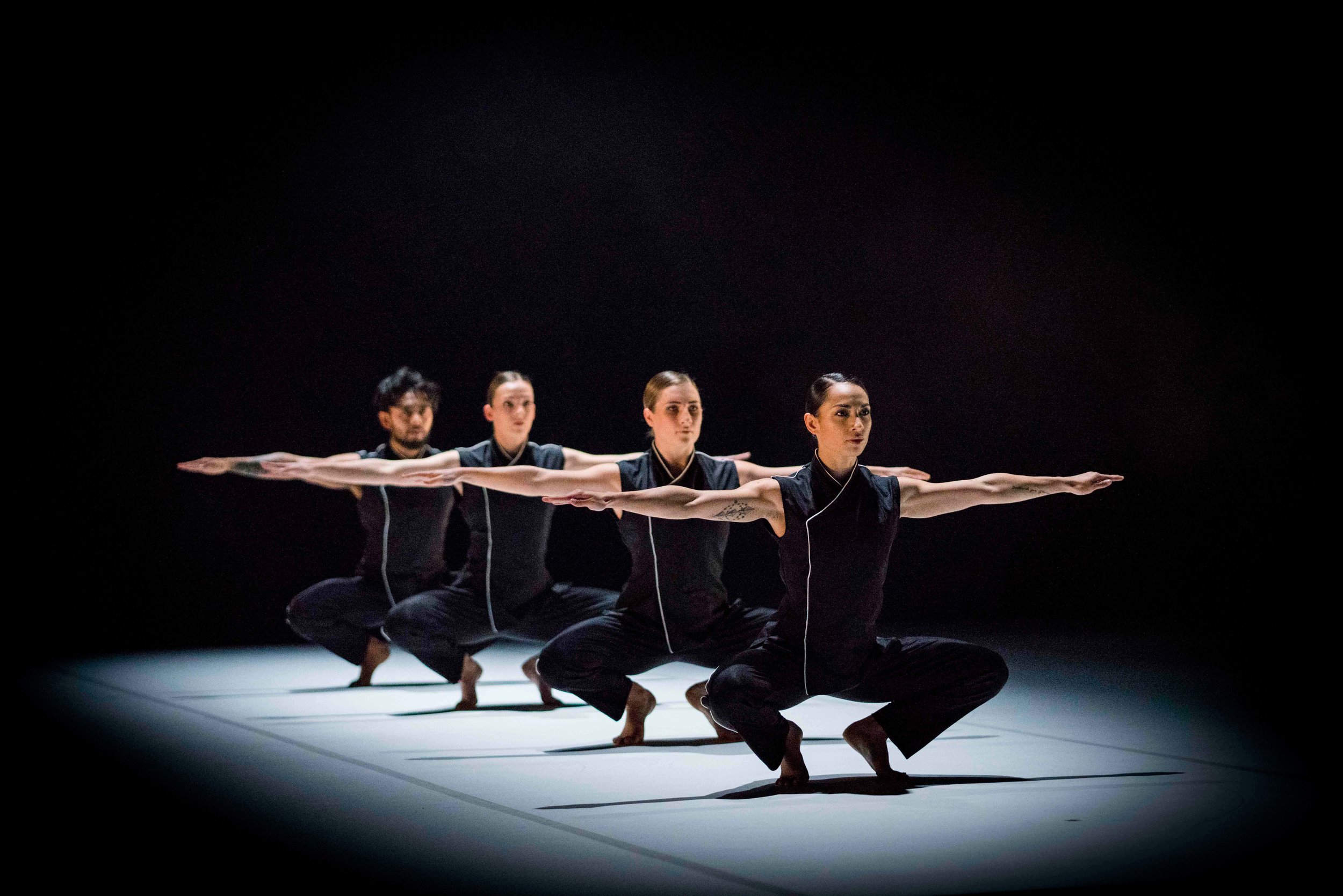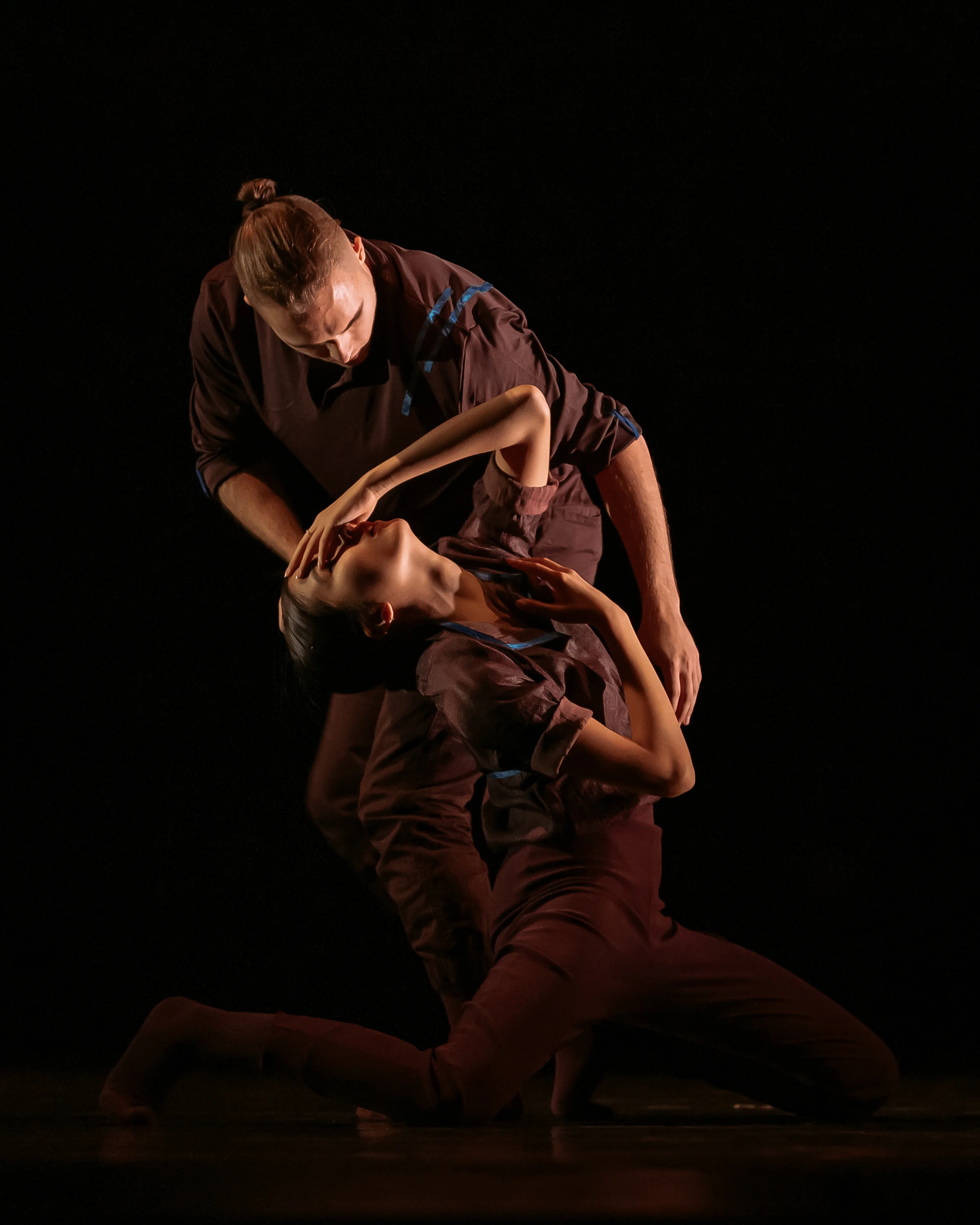Ilter Ibrahimof Photo by Darlene Huynh
the concept is a simple one: presenting emerging dance artists alongside established companies and ensembles, with an eye for both local and international dance-makers. that’s what the Fall For Dance Festival was created to do in 2004 at the New York City Centre, and ten years later found its toronto iteration in Fall For Dance North (FFDN). the journey that brought FFDN artistic director ilter ibrahimof to toronto began in new york where he was inspired by the festival and sought to create something similar but uniquely canadian. like the original festival, ibrahimof wanted to maintain what is perhaps the festival’s winning feature: a $15 price tag for each ticket across all programs. for those who are looking for an inexpensive introduction to contemporary dance in toronto, this affordability translates to accessibility .
In the first year of FFDN I kept telling people that it’s going to go well, we’re going to sell out...no one really believed me a hundred percent even though they wanted to support my vision. They’d always say “You know the problem when it comes to Toronto and dance.” but I persisted and insisted that we will be successful. For the first year to sell out and for people to stand up and cheer and scream for dance at Sony Centre was a surprise. That electricity has never worn off. “” ilter ibrahimof in conversation
the five-day festival runs from october 2-6 and presents three programs across three unique venues, as well as a set of ancillary programming throughout the festival. the programming showcases three commissions of canadian dance-makers, as well as international artists like india’s shantala shivalingappaand sweden’s Skånes Dansteater, among others (full roster below). i had an opportunity last week to discuss this year’s programs with ibrahimof, as well as looking back on the past five years since he took up this project (full interview below).
(interview with ilter ibrahimof)
FFDN will be marking its 5-year anniversary this year, what has surprised you the most with the festival’s growth?
I think the surprises began in year one, I was living in Montreal at the time but I used to live in New York and did quite a bit of work with the original Fall For Dance festival there, so I knew what the festival was and what it can be. I really had the feeling that it was the right project at the right time and that Toronto was the right place to do it. I believed that the dance scene here needed a bit of a lift-up. When it comes to international dance and big Canadian dance, a lot of projects and companies tour to places like Montreal or Ottawa, and to a certain extent Vancouver has built a really healthy dance scene, but Toronto kind of lagged behind. There’s no real reason for that I can be convinced of. This is the biggest city, there are lots of arts-lovers and philanthropy here, as well as diverse audiences, there’s just so much. I think somebody or some project needed to come in and just ignite people’s imagination and give them a reason to come through the door and see dance. The Fall For Dance model was perfect for that. We had to create our own identity with the festival in Canada so we did focus on a lot of Canadian works; we built good relationships with big institutions like the National Ballet from the very start and knew that we needed their support, their belief and their performances.
indeed, i see that two of the NBoC’s dancers are on your board of directors?
Yes, it’s amazing, they’ve been wonderful to work with for the past five years. They’ve been with us from the very beginning. Karen Kain also believed in our festival right from the start. Karen spent her career at Sony Centre so it felt like a little bit of a homecoming for her for the NBoC to perform there again. In the first year of FFDN I kept telling people that it’s going to go well, we’re going to sell out...no one really believed me a hundred percent even though they wanted to support my vision. They’d always say “You know the problem when it comes to Toronto and dance.” but I persisted and insisted that we will be successful. For the first year to sell out and for people to stand up and cheer and scream for dance at Sony Centre was a surprise. That electricity has never worn off. To this day I’m surprised whenever I see our performances completely full and people are so excited. Also, to see the reflection of Toronto and the diversity of our city in the community our festivals--because of the nature of the mixed programs--you’ll see a hip hop audience mixed with the South Asian audience, or a contemporary audience, or the indigenous audience. That’s a beautiful thing to see and it always surprises me.
how did affordability and accessibility become a prominent part of organizing this festival, especially with the $15 admission fee?
Affordability was a default feature from the beginning because the original Fall For Dance model from New York is the same way. The admission fee was ten dollars for eight years and after that they raised it to fifteen dollars, and it remains the same till this day. So that was built into the model. When it comes to the performing arts, especially dance, it’s hard to get people in through the doors to see contemporary dance, so that fifteen dollar ticket makes it more accessible. It democratizes it so that anyone can attend these shows. A lot of work goes into making that happen, a lot of grant and fundraising work, but our belief is that we should keep that ticket price for as long as we can. There’s so many young people who are interested in discovering dance but they simply can’t afford it. Bringing a date to something like this, or bringing your young family usually costs a lot of money. Whereas you can come with your significant other or your two small kids to FFDN for sixty dollars for four tickets. With that you can discover all sorts of different dance, some you will like and others not, but hopefully you are encouraged to see other things in the future and maybe then you will be triggered to pay a little bit more and see other things around town. We all need that introduction and education that gives you a reason to continue.
were there any themes associating the pieces in each of the three programs? and what were some of the qualifying features that helped you in the curation process?
There really is no obvious theme, except that the Ryerson Theatre productions are all indigenous works from all around the world and in Canada. We started with Ryerson Theatre last year and thought that it was a stage we could experiment with some more focused themes; for example, last year it was all female dance makers of different generations and styles. This year it’s indigenous works and we’ve been presenting and investing in indigenous works since year one. So this was a natural decision for us to do an all-indigenous program. Although the other programming does not have a theme, there are a few guiding principles. One is to have as much diversity and high quality productions as possible, the best that we can find. Also representing all genres of dance, so I look at what we presented in the past and what we haven’t presented yet. Investing in new Canadian works is another guiding principle, so we have three commissions this year and they are all from Canadian artists. Live music is important to me, it makes all the difference.
what is the trajectory of growth that you have in mind for the festival going forward?
We’re still in the middle of planning that so I can’t say too much, but definitely there’s more growth on the way. We’re thinking about perhaps adding more venues and expanding our footprint in Toronto. Right now we’re in the Sony Centre, Ryerson and we do some programming at Union station. We also do an industry series called the International Presenters Program where we invite people like myself--festival and theatre directors from around the world--to come and see Canadian works. Both in our mainstage performances and during the day we do a lot of showcases for them with Toronto based artists. Our partnership with the Harbourfront Centre allows us to use their two theatres for this industry series. The next five-year growth trajectory might see us go beyond the mixed-evening model and start presenting a few full-length projects alongside the mixed-evening programs. We’ve started to do some Union activities throughout the year so we could start presenting with our partners throughout the year. So basically positioning ourselves to become that signature dance-presenting organization in Toronto that people can look at and trust. With our taste, accessibility, and presenting the newest trend in dance and the most exciting up-and-coming names on the international as well as the Canadian stage. I’d like FFDN to become first organization that people think of when they think of dance in Toronto.












